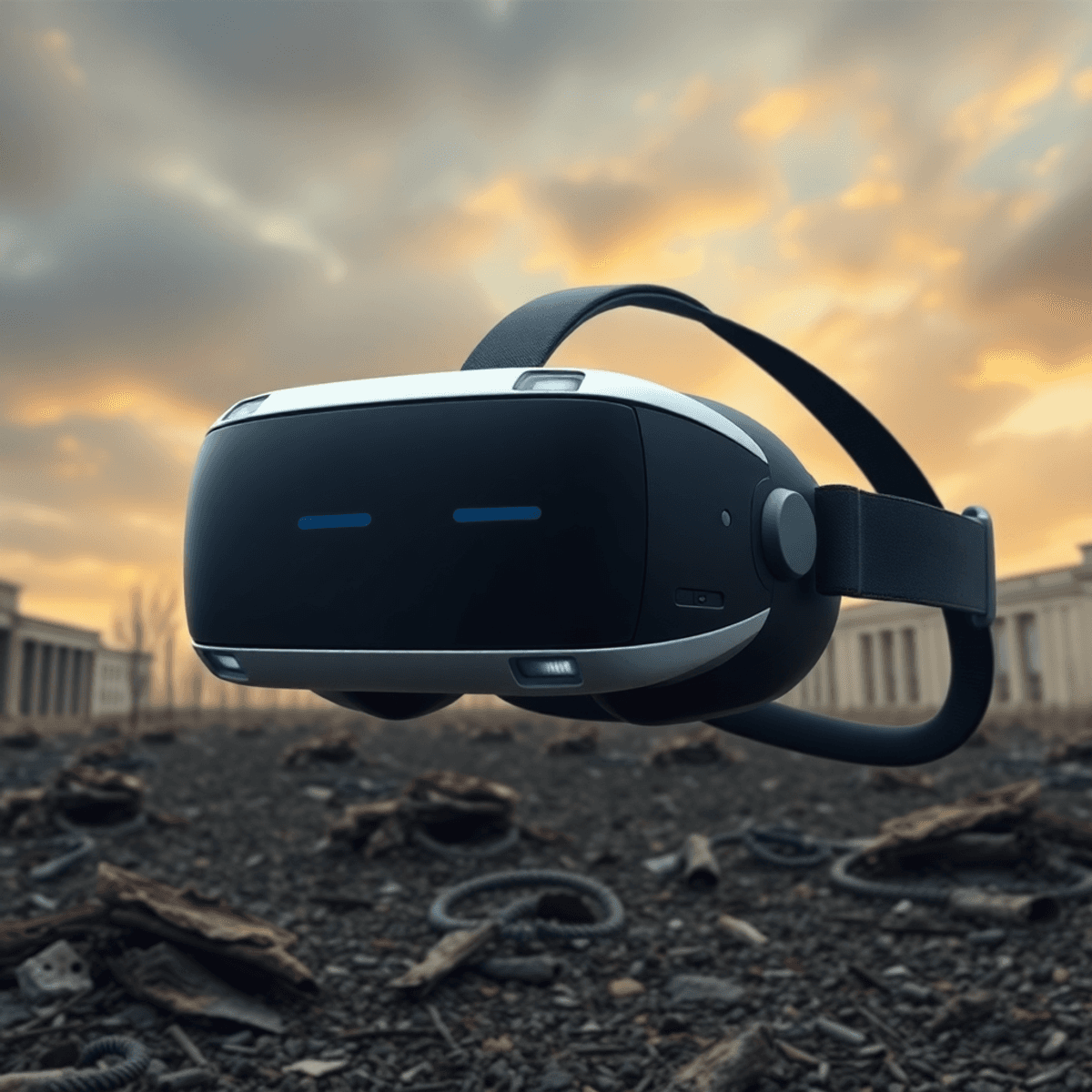
The Ukrainian war has changed lives, communities, and countries. The effects go beyond borders, with displacement, trauma, and loss affecting multiple generations. To truly understand this war, we need to look beyond news headlines and delve into the deeper stories that surround it.
This is where virtual reality (VR) comes in—a powerful medium for storytelling. Museums are increasingly using this technology to create immersive experiences. Visitors wear headsets and enter a different world, witnessing destruction, experiencing chaos, and gaining insights that traditional exhibits cannot provide.
But why is this important? Different narratives shape our understanding and influence our perceptions. As VR becomes an educational tool, it raises concerns about bias and representation. Are we witnessing an act of storytelling or a form of propaganda?
It’s essential to understand how both sides of the Ukrainian war are using VR to control the narrative in museums. The stories told through these digital perspectives will shape how future generations understand conflict, history, and humanity itself.
Virtual reality (VR) technology is changing how museums tell stories about wars. With VR, visitors can go into interactive museums and experience history as if they were actually there.
The emotional impact of these immersive experiences is profound.
This heightened engagement fosters a deeper understanding of complex histories, compelling audiences to reflect on the implications of conflict in a visceral manner.
The Ukrainian war has led to a stark divide in narratives, particularly visible through the use of VR in educational settings.
In Russia, special military operation museums have emerged as tools for narrative control. These exhibits often showcase:
Such content aims to foster a specific viewpoint, casting Russia’s actions in a positive light while framing Ukraine as the aggressor. For instance, one exhibit concludes with a provocative statement: “Kharkiv is a Russian city; the enemy will be defeated,” suggesting an impending victory without naming a date. This manipulation shapes young minds, influencing how they perceive historical events.
In stark contrast stands the War Up Close exhibition at Carleton University. This initiative utilizes immersive technology to convey the human cost of war through:
The exhibition invites visitors to explore 360-degree panoramas of devastated areas, offering an emotional connection to the realities faced by those impacted by warfare. The art created by children reflects hope amid despair, providing insight into their experiences and emotions.
This juxtaposition highlights how two narratives can coexist within the same framework of VR technology. While Russian exhibits aim to reinforce state-sponsored ideologies, initiatives like War Up Close emphasize empathy and personal histories. Understanding these contrasting perspectives is crucial for grasping the complexities surrounding modern warfare and its representation.
Virtual reality (VR) has transformed traditional learning, especially regarding complex subjects like war. The impact of interactive exhibits in schools cannot be understated. Students are not merely passive recipients of information; they engage actively, navigating through immersive environments that compel them to confront history.
Studies show that students retain information better when they experience it firsthand. VR allows them to witness the realities of conflict, deepening their understanding.
Immersive experiences foster empathy. By stepping into the shoes of those affected by war, students can grasp the human cost and emotional weight behind historical events.
Quizzes about the war in Ukraine serve as a pivotal educational tool within these interactive settings. They challenge students to think critically about the material they encounter. These quizzes often include:
However, these assessments can also shape perspectives significantly. When quizzes frame certain narratives as “correct,” they may inadvertently promote specific viewpoints while marginalizing others.
The duality in how educational content is presented matters profoundly. Engaging with both Russian and Ukrainian narratives through VR offers students a more rounded perspective. Yet, if one side dominates the curriculum—especially through curated quizzes—the potential for bias increases.
In this landscape, educators must navigate carefully. They should encourage critical thinking around these narratives while providing diverse viewpoints to ensure that students emerge with a well-rounded understanding of the conflict.
The integration of VR into educational settings marks a significant shift in how young people learn about history. It holds promise for fostering informed future citizens who can engage critically with complex global issues.
Curators face a complex landscape when creating immersive experiences that effectively present narratives of the Ukrainian war. The integration of cutting-edge technologies, such as drone footage, 3D modeling, and 360-degree panoramic images, aims to enhance emotional engagement. Yet, challenges loom large.
Engaging with these aspects requires careful consideration from curators. The responsibility to educate while captivating audiences is a delicate dance that shapes perceptions of conflict and history.
The power dynamics within VR narratives surrounding the Ukrainian war demand scrutiny.
Critical engagement is imperative. Educators and consumers must navigate these technologies thoughtfully, recognizing their potential to influence understanding. Only then can we grasp the complex layers of this ongoing conflict, ensuring that diverse perspectives are acknowledged and respected.


